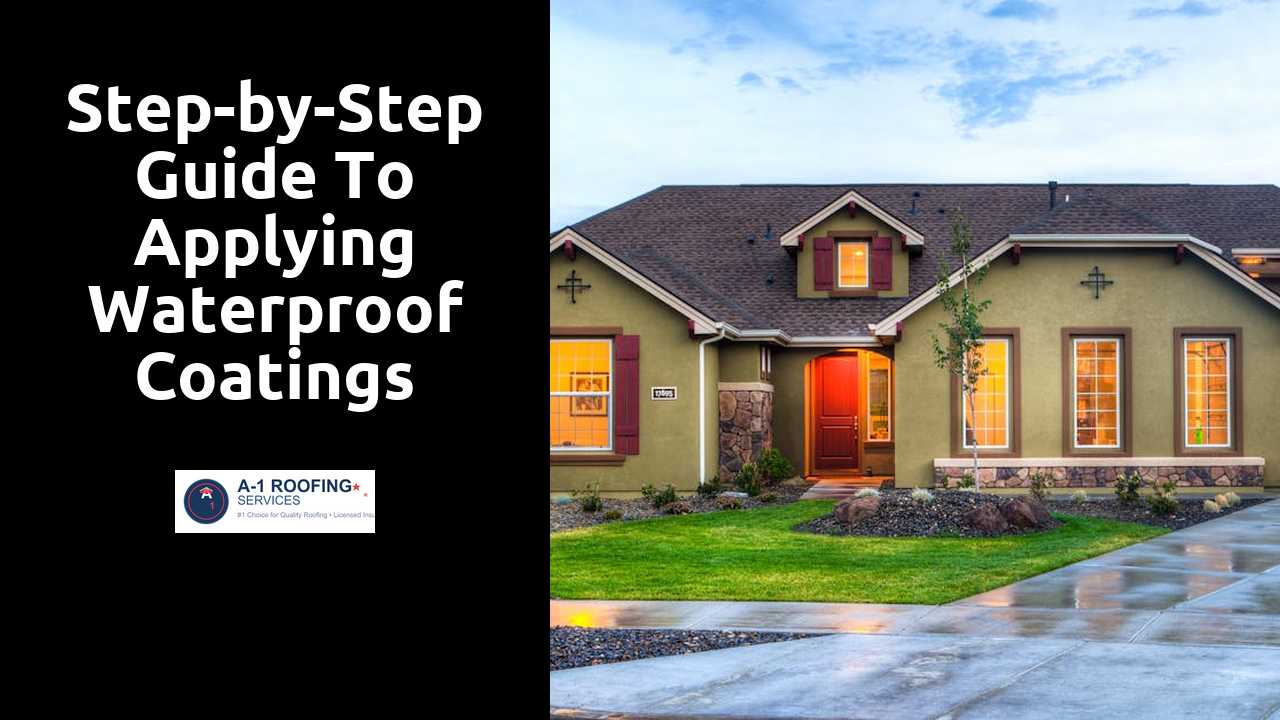
Step-by-Step Guide to Applying Waterproof Coatings
Table Of Contents
Applying the Coating
Before beginning the application of waterproof coatings, ensure that the surface is clean and free from any debris. Use a pressure washer or scrub brush to eliminate dirt, grease, and old paint. This prepares the substrate for optimal adhesion, which is crucial for the coating's effectiveness. Make sure to let the surface dry completely before proceeding.
When ready to apply the coating, follow the manufacturer's instructions closely regarding mixing and dilution. Begin in a corner of the area, working systematically to ensure even coverage. Utilize a roller or spray gun for larger surfaces, ensuring that each pass overlaps slightly with the previous one. For edges and tight spots, a paintbrush can provide control and precision.
This new blog post covers this topic in more detail.
Techniques for Even Application
Achieving an even application of waterproof coatings relies heavily on the tools used and the methods employed during the process. Rollers and brushes are common options, but sprayers can offer more uniform coverage, especially over large areas. Regardless of the method, it's vital to maintain a steady pressure and consistent speed to avoid variations in thickness. Starting from one corner and working methodically can help ensure a uniform layer, preventing build-up in specific spots.
Preparation of the surface plays a significant role in achieving an even coat. Cleaning the area thoroughly removes any dust or debris that could disrupt adhesion. If the surface has a texture, using a brush may help get into crevices better than a roller. Additionally, applying the coating in thin layers rather than one thick layer reduces the risk of drips and runs, promoting a smoother overall finish. Consistently checking for spots or unevenness while applying can also help catch any mistakes early in the process.
Curing and Drying Times
The curing and drying times of waterproof coatings are crucial factors that can influence both performance and longevity. Typically, the time it takes for a coating to dry before the next layer is applied can range from a few hours to several days. This duration largely depends on the type of coating used, environmental conditions, and thickness of the application. To ensure optimal adhesion and effectiveness, it is important to follow manufacturer guidelines and pay attention to product specifications.
Temperature and humidity also play significant roles in determining how quickly a coating cures. Higher temperatures often accelerate the drying process, while increased humidity levels can slow it down, potentially leading to poor results if not managed properly. Additionally, the substrate's material composition may affect drying times. Regularly checking the coating's progress can help identify when it is suitable for use or when another layer can be applied.
Factors Affecting Cure Time
Curing time for waterproof coatings can vary significantly based on several environmental conditions. Temperature plays a crucial role; warmer temperatures generally expedite the curing process, while colder conditions can prolong it. Similarly, humidity levels can influence how quickly the coating dries. High humidity may slow down curing as moisture in the air impedes the drying process, whereas lower humidity can facilitate a faster cure.
The type of coating being used also affects the time required for proper curing. Different formulations have varying chemical compositions, which can determine their drying speed and hardening characteristics. Additionally, the thickness of the application contributes to how quickly curing occurs. A thicker layer usually requires a longer time to set completely, leading to differences in readiness for subsequent treatments or exposure to water.
Inspecting the Coating
A thorough inspection of the coating is essential to ensure that it has adhered properly and will provide the necessary protection against moisture. Begin by examining the surface for any imperfections such as bubbles, cracks, or peeling. These issues can indicate poor application techniques or inadequate preparation of the substrate. Pay special attention to edges and corners where the coating is more likely to show signs of failure.
It is also important to check for uniformity in color and texture across the entire coated area. Any noticeable variations may suggest uneven application or issues with the coating material itself. Use a flashlight if necessary to highlight any inconsistencies. Conducting this inspection shortly after the coating has cured will help identify any problems before they become more significant issues, ensuring the longevity and effectiveness of the waterproof barrier.
Signs of Proper Application
A well-applied waterproof coating should exhibit a uniform appearance across the surface. Look for an even sheen without any streaks or uneven patches. An ideal finish should not show any bubbles or peeling, which can indicate improper application techniques or inadequate surface preparation. Areas that are prone to moisture accumulation should especially reflect consistency, as this suggests that the coating has properly adhered to the substrate.
Another sign of a successful application is the coating's resistance to water infiltration. After applying the coating and allowing it to cure for the recommended time, the surface should repel water effectively. Conducting a simple water test by splashing some water onto the surface can help verify this. If the water beads up and rolls off, it demonstrates that the coating has formed a barrier, effectively fulfilling its intended function. Look for any areas where the water is absorbed, as this can signal potential weaknesses in the application.
Related Links
Long-Term Benefits of Proper Roof WaterproofingThe Role of Drainage Systems in Roof Waterproofing